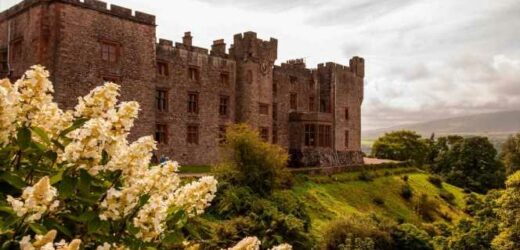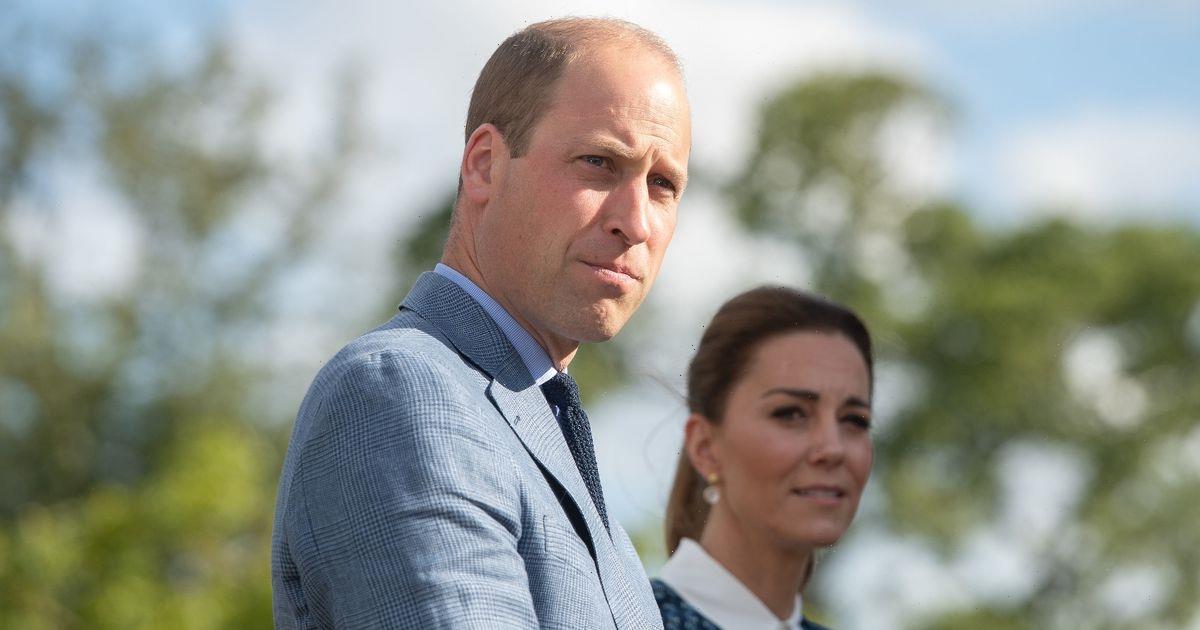THE vast, deathly black wings of the vulture brush past my ear.
I feel the swish of a plume of feathers tickle my cheekbone as Mouse glides into land on the gloved arm of keeper Stuart.
With stomach acid that’s more corrosive than battery acid, there isn’t much that vultures won’t eat.
But as Rachel, fearless commentator at the Muncaster Castle’s bird display points out to the crowd, vultures perform a vital service in preventing disease in the wild by picking the corpses of other animals entirely clean.
Mouse performs alongside a bald-headed eagle called Mowgli and a black-chested buzzard eagle named Pegasus, both swooping within a whisker of me as I sit on a bench overlooking the long grasses of a field-vole meadow.
The turrets and drawing rooms of Muncaster Castle sit proudly to my side — while the view from the grounds’ sweet chestnut trees, out across verdant fields and the looming peak of Scafell Pike beyond prompted the Victorian writer and philosopher John Ruskin to say he’d found the “gateway to paradise” in this part of Cumbria — far away from the area’s better known draws.
READ MORE TRAVEL
You can rent an entire island and lighthouse in European hotspot for just £28pppn
Passenger shares photo of person’s FEET sticking out under her plane seat
The Lake District is, in many parts, a victim of its own beauty.
Such was the love that every-one from William Wordsworth to Beatrix Potter had for the region, that summer crowds can make Lake Windermere on a sunny day feel like an extension of Center Parcs — and the tapering lanes can become as busy as a motorway service station exit-point, albeit with better views.
But there are numerous parts of Cumbria, on the fringes or outside of the National Park, that are every bit as beautiful as the county’s greatest attractions — and with barely a visitor to be seen.
Prowling around Muncaster Castle, still lived in today by its owners the Pennington family, I’m told numerous ghost stories about the rooms, one of which is no longer used by guests of the family because too many people com-plained of hearing the cry of a baby in the dead of night.
Most read in The Sun
EastEnders star dies aged just 38 as devastated family pay tribute
Cher Lloyd looks worlds away from her X Factor days in stunning new snap
Charles makes 'unusual' daily visits to Queen at Balmoral as health fears grow
I found lump days after mum was diagnosed with cancer, says Charlotte Crosby
The castle even has a resident “fool” who puts on occasional performances.
Though the most foolish person in this coastal region of Cumbria is me the following morning — as I take a train called the La’al Ratty.
This is the nickname for the Ravenglass and Eskdale Railway where a tiny steam train rides the track once used to transport iron ore from the region’s mines.
Taking the first train of the morning, at 9.30am, I have the lunatic, foolish grin of a kid on Christmas morning as the loco chugs through lush, green ferns.
Sheep dawdle on the edge of the track looking at me with mild disdain.
Two wild deer jog alongside the driver’s carriage as I feel transported to the train journey of my childhood dreams.
Back in the village of Ravenglass — once the site for a Roman army base deployed to guard Hadrian’s Wall — I stroll along the main street lined with sturdy, whitewashed cottages and look out over the estuarine dunes and mudflats as the sun beats down on an area popular with gulls, kittiwakes and terns that fly in from Africa to breed.
Superior slumbers await here at the Pennington Hotel, owned by the family who reside in Muncaster Castle.
Rooms out in the old stables are chic and demure while the brasserie does a mean seafood platter of prawns, mackerel, salmon and herring.
On my final day I head to the nearby village of St Bees, farther up the Cumbrian coastline.
Cute as a button, this little cluster of biscuit-tin cottages ends at the start of the sandstone cliffs that stretch all the way to St Bees lighthouse.
Pounding along the clifftops, I can see the Isle of Man in the far distance, while exceptionally noisy razorbills and herring gulls perform a manic airborne polka before gliding into perching spots in the clefts of the cliff face.
The squat little lighthouse itself is a milestone for hikers.
Read More on The Sun
I’m a size 26 and weigh 12st MORE than my man – we’re proud of our relationship
Millions of PlayStation owners could be owed ‘up to £560 EACH’
For it’s where the late master-mapper Alfred Wainwright’s famous Coast To Coast footpath route begins, leading for 190 miles all the way to Robin Hood Bay in North Yorkshire.
I leave that adventure to those with sturdier legs because, if it’s abundant nature, huge meals and low prices you’re after, there’s no need to leave this little known corner of Cumbria.
GO: CUMBRIA
GETTING THERE: Avanti West Coast have direct trains from London Euston to the Lake District from where you can take local connections to St Bees, Drigg and Ravenglass. Returns from £65.50 return.
STAYING THERE: Bed and breakfast at the Pennington Hotel in Ravenglass from £108 per night. See muncaster.co.uk
MORE INFO: See visitlakedistrict.com and ravenglass-railway.co.uk
Source: Read Full Article

















